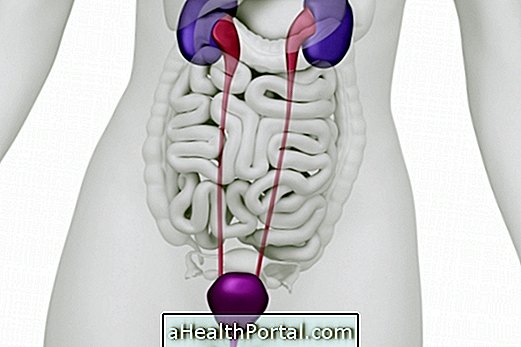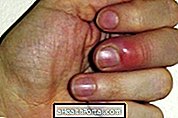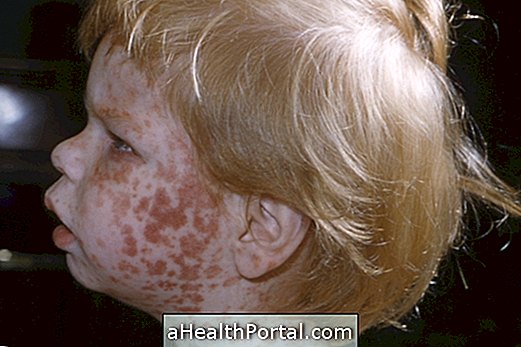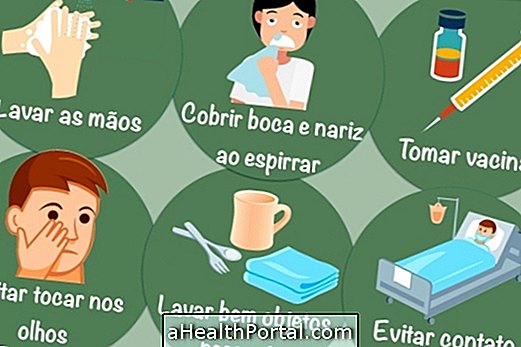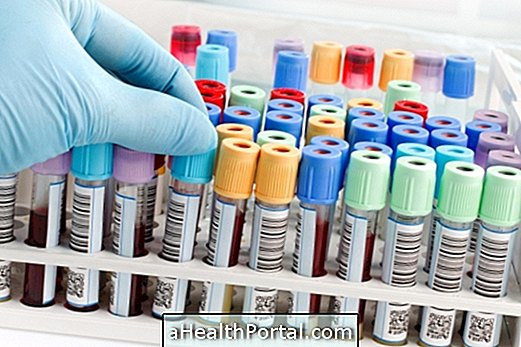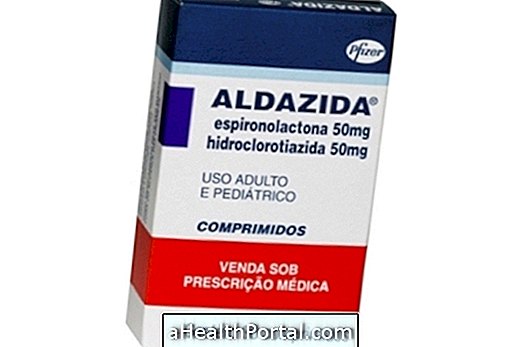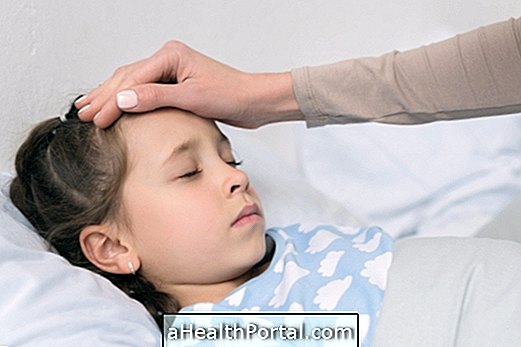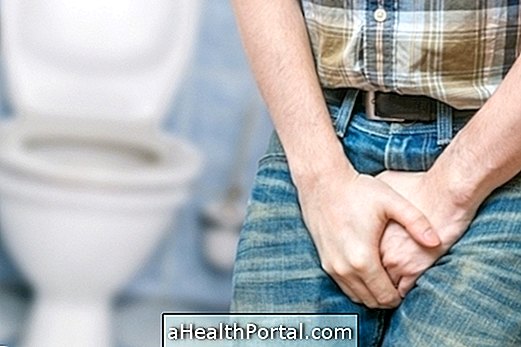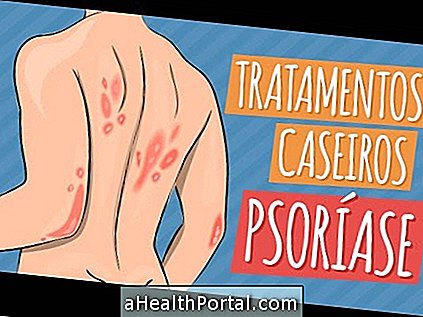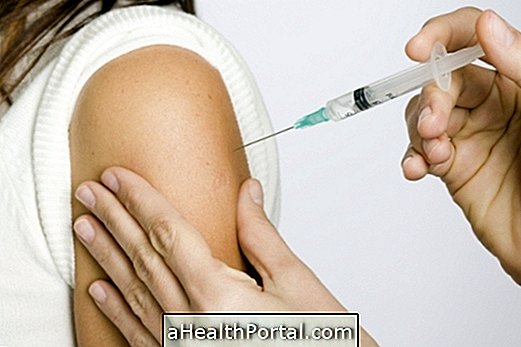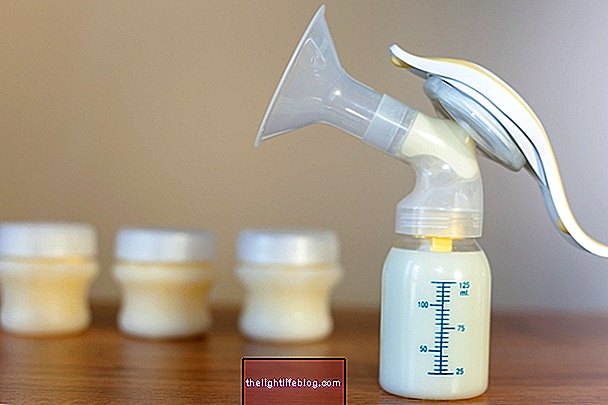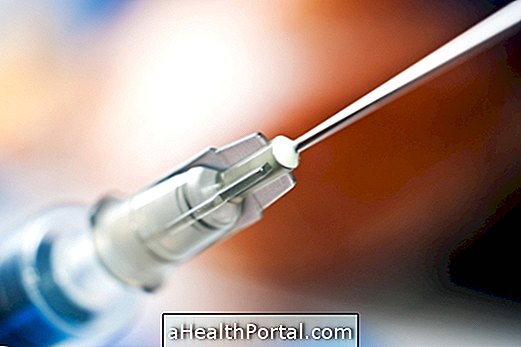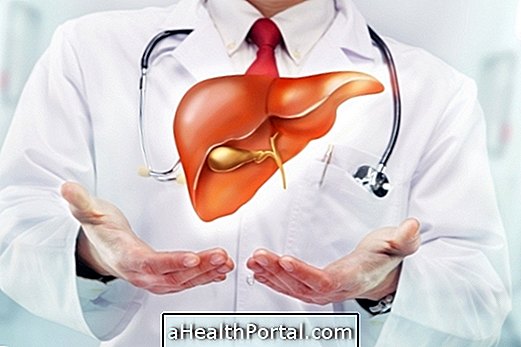The treatment for the hand foot mouth syndrome aims to relieve symptoms such as high fever, sore throat and painful blisters on the hands, feet or intimate region. Treatment should be done under the guidance of the pediatrician and the symptoms usually disappear one week after the start of treatment, which can be done with:
- Fever medicine such as Paracetamol;
- Anti-inflammatory, such as Ibuprofen, if the fever is above 38 ° C;
- Orthotic ointments or remedies, such as Polaramine;
- Thrush remedies, such as Omcilon-A Orobase or Lidocaine.
Hand-foot-mouth syndrome is a contagious disease caused by a virus, which can be passed on to others through direct contact with another person or through contaminated food or objects. This disease is more common in children under 5 years and symptoms appear between 3 to 7 days after infection by the virus. Learn more about hand-foot-mouth syndrome.
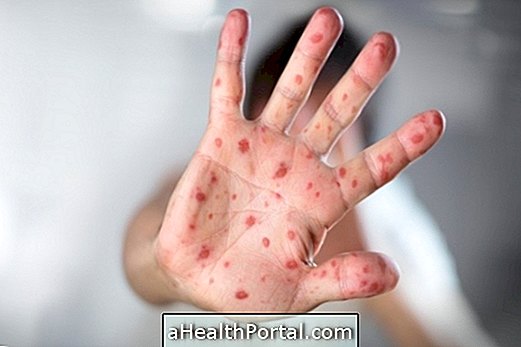
Care during treatment
It is important to have some care during the treatment of the hand-foot-mouth syndrome, as this can be transmitted through coughing, sneezing or saliva, direct contact with blisters that have burst or infected stools.
Thus, some care that should be maintained during treatment include:
- Keep the child at rest at home, without going to school or day care, so as not to contaminate other children;
- Consume cold foods, such as natural juices, crushed fresh fruit, gelatine or ice cream, for example;
- Avoid hot, salty or acidic foods, such as soft drinks or snacks, so as not to make sore throats worse. Learn what to eat to relieve sore throat;
- Gargle with salt and water to help relieve sore throat;
- Drinking water or natural juices for the child does not dehydrate;
- Wash hands after going to the bathroom to prevent transmission of the virus even after recovery because the virus can still be transmitted through the stool for about 4 weeks. Here's how to wash your hands properly;
- If your child uses a diaper, change the diaper with gloves and wash your hands after changing the diaper, both at home and in the day care center, even after recovery.
When the symptoms of the disease disappear, the child can return to school, taking care to wash their hands after going to the bathroom. Learn how to avoid infectious diseases.
When to go to the doctor
The hand-foot-mouth syndrome improves naturally between one and two weeks, but it is necessary to return to the pediatrician if the child presents:
- Fever above 39ºC, which does not pass with the medicines;
- Skin and dry mouth;
- Weight loss;
- Somnolence;
- Little production of urine or dark urine;
- Very red, swollen blisters, with release of pus.
These symptoms may indicate that the child is dehydrated or that the blisters are infected. In this case, the child should be taken immediately to the hospital to receive serum from the vein or antibiotics in case of blister infection.
Signs of improvement
Signs of improvement of hand-foot-mouth syndrome include the reduction and disappearance of canker sores and blisters, as well as fever and sore throat.
Signs of worsening
Signs of worsening of hand-foot-mouth syndrome occur when treatment is not properly performed and include increased fever, canker sores and blisters, which may become red, swollen or begin to release pus, drowsiness, poor urine output or dark urine. Know other causes of dark urine.

